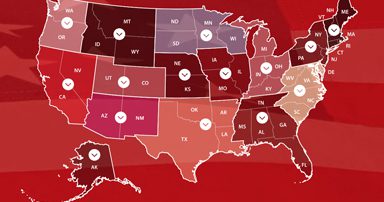GOALS/OBJECTIVES
- Understand what a shortwave (SW) radio can pick up and NOT pick up for radio waves.
- Know 3-4 common antennas to use for Shortwave Listening (SWL).
- Understand how to orient your antenna.
- Perform the steps to tune in and listen to a specific frequency.
- Additional resources to practice SWL skills.
What a Shortwave (SW) Radio Can and Can’t Pick Up for Radio Waves
- Shortwave Radio Listening is not like listening to AM and FM stations in your car.
- Commercial AM and FM radio stations are professionally designed for profit, and relatively static free.
- Amateur radio stations are designed by amateurs, usually not for profit, and experience static.
- Various SW radios can be used, not just the Tecsun PL880 recommended by CORAC. However, the SW radio must have the SSB (Single Side Band) feature.
- A shortwave radio can only receive radio signals, it cannot transmit them.
- A shortwave radio is a radio that can pick up high frequency (HF) radio waves.
- HF radio waves are referred to as the shortwave band of frequencies
- Shortwave frequencies are best for long-distance communication over mountains and across the country.
- Amateur radio base units are designed for transmission and reception of HF waves.
- A base unit can be a mobile (backpack or vehicle) or desktop setup.
- A base unit should not be considered a handheld device.
A SW radio can NOT pick up ultra-high frequency (UHF) or very high frequency (VHF) radio waves. Handheld transceivers (HTs) transmit VHF & UHF radio waves and are best for line-of-sight communications.
Know the 3-4 Common Antenna Types to Use for SWL
HF radio waves are actually very long radio signal waves although they are called shortwaves. The adage “the longer your antenna the better” applies to reception of shortwaves. The telescopic antenna can pick up some HF radio waves but it is short. It is best to have an antenna as long as possible to receive HF radio waves.
- The telescopic antenna attached to the top of the radio. Fully extend the telescopic antenna. Rotate the antenna at the base to improve reception
- An Indoor Active Loop Antenna
- An SW External Antenna ▪ Tecsun PL880 comes with a 15.6 ft SW wire antenna
- Tecsun PL880 comes with a 15.6 ft SW wire antenna
- Others can be purchased which are longer (23 ft)
- Connect the antenna plug end to the socket marked SW ANT on the side of the radio.
- Orient the antenna broadside to the transmitting location (Map details below).
-
Connect the antenna plug end to the socket marked SW ANT on the side of the radio. Orient the antenna broadside to the transmitting location (Map details below).
- Homemade long wire antenna (instructions below)
After months of trying out the above antennas, I have found SWL the most successful with the following antenna. Yet, I have heard from CORAC members who have listened successfully to CORAC’s netcasts using the telescopic or external shortwave antennas. It depends upon various factors. SWL is not a situation where “one answer for the question fits all”, as much as we would like it to be. My recommendation is to first try the telescopic antenna. If you have problems picking up CORAC’s netcasts, then try the SW external antenna included with the TECSUN or either of the above SW External Antennas. If you still have a challenge, make the antenna described below.
- The simplest and probably most successful SWL antenna is a single 14 AWG stranded wire connected to the shortwave radio.
- The longer, the better. However, that is not always possible.
- There are calculations to determine what you need. (468/ frequency in MHz)
- 468/7.28410 = 64.25
- 468 is a “magic HAM number” for calculating antenna lengths.
- 7.28410 is the CORAC netcast frequency on Sunday nights.
- A good receiver antenna is @ 64.25 feet long (64 ft 4 inches). An average antenna is @ 32.125 feet long (32 ft 2 inches).
What is needed to make an SWL long wire antenna? Instructions:
Two lengths of rope (3-10+ ft) for attaching one end of the wire to your house or a tree, and one end to attach to a tree about 65+ feet away. (I used paracord rope.)
Strip about 1 inch of insulation from one end of the wire. This is the end that will be wrapped around the antenna or connected by alligator clips (one clip to the stripped wire and one clip to the telescopic antenna).
Tie a knot at least 3-5+ ft from the stripped wire end. You need the 3-5+ ft to run into your house, most likely a window, to connect to the telescopic antenna.
Attach a small diameter rope, with a slip knot, behind the knot and away from the stripped wire end.
This rope will be attached to your house. Use a semi-circular hook or nail as an anchor on the house to tie the rope to the house.
Tie a knot in the other end of the wire. Use a dab of caulking or silicone over the open insulation end to prevent water from getting to the wire. Attach a small diameter rope, with a slip knot, in front of the knot in the wire. Attach the other end of the rope to a tree and tie it to the tree, so the wire can be extended as long as possible. Keep the previous noted lengths in mind when measuring from knot to knot for the antenna.
Orient the antenna broadside to the transmitting location (Map details below).
The long wire antenna needs to be fairly taut.
Use the rope ends to adjust the snugness of the wire.
When placing an antenna to listen on shortwave radios, do the following:
- Antennas used indoors will work, dependent on your household’s electrical interference.
- It is best to place your antenna outdoors.
- Place an outdoor antenna as high as possible, 10 feet is recommended but 6 feet can work.
- Place the antenna away from buildings, as best as possible, and definitely away from powerlines.
- It may be prudent, if a lightning storm is in your area, to disconnect the stripped wire end of your homemade long wire antenna from the radio and cover the exposed wire with a rubber material. The antenna is not grounded.
Orientation of Your Antenna
It must be as close to broadside as possible to the transmitting base station to catch the shortwave. For example, orientation of the “green antennas” are less likely to catch the shortwave from the “red base station”.
Perform the Steps to Tune In and Listen to a Specific Frequency
- Once your antenna is set up, turn your SW radio on.
- Push the SW button for shortwave.
- Input a frequency, for example 7284 (the display should show 7284)(the SW radio does not display decimals ahead of the first 4 digits).
- Push the USB or LSB button. (the display may now show 7284.00) This focuses on a section of the radio signal.
- Turn the fine-tuning dial from 7284.00 to 7284.10 (the display will show 7284.10)
- USB and LSB may be alternated to discover which captures the radio signal best. One is usually better than the other.
Currently, CORAC is using the 7.284.10 frequency of the 40M band on Sunday nights for its netcast. The times are 7:30 PM EDT, 6:30 PM CDT, 5:30 PM MDT, & 4:30 PM PDT.
CORAC’s Communication Team is performing a transmitting relay. One member transmits initially. This is followed by 1-3 additional members located throughout the nation retransmitting the initial message. Listen for 15-20 minutes. The current location of the originating station is in Georgia with relay stations in Texas, Minnesota, and Kansas. More are being added.
Successful shortwave radio listening is dependent on the sun, atmospheric conditions and electrical interference. SWL can be challenging but not impossible. The netcast may be crystal clear or full of static.
You may hear a netcast one day and not the next, on the same frequency, due to changing conditions of interference sources. We need to trust that we will hear what we need to hear when we need to hear it.
Additional Resources to Practic SWL Skills
Below are three netcasts that occur throughout the nation every day. Tune your radio to the frequency listed and practice. I encourage you to check out netlogger.org for additional practice.
The Saltminers Net (originates out of Ohio but not affiliated with CORAC)
- 40M FQ: 7.284.10
- 1 hour duration
- Begins at 8:00 AM EDT, 7:00 AM CDT, 6:00 AM MDT, 5:00 AM PDT
The SouthCARS Net (originates out of Region 4 but not affiliated with CORAC)
- SCARS – South Coast Amateur Radio Service (southcars.com)
- 40M FQ: 7.251.00
- 4 hours duration
- Begins at 9:00 AM EDT, 8:00 AM CDT, 7:00 AM MDT, & 6:00 AM PDT
MidCars Amateur Radio Service (originates out of Region 6 but not affiliated with CORAC)
- 40M FQ: 7.258.00
- 5 ½ hours duration
- Begins at 8:30 AM EDT, 7:30 AM CDT, 6:30 AM MDT, & 5:30 AM PDT
This link provides netcasts running “right now” throughout the nation.
- NetLogger – Amateur Radio Logging Program
- https://www.netlogger.org/
If you need further help reach out to your Regional Coordinator or your Region’s Communications Team Lead. They will assist in whatever way they can. Thank you to those who provided critical feedback on the challenges they were experiencing to make this document possible.





















I’m a new HAM (Technician) KD9TWV – in the suburbs of Chicago. I have a ICOM 7300 with MFJ-1778 G5RV 100′ ladder dipole that I’ve been using trying to listen in on the Sunday Net. My antenna is positioned horizontally just off center from South to North. Still haven’t picked up much from the CORAC Nets. I did get a brief contact from someone in North Kansas last night on 3.976, but signal was gone pretty quick. I’m thinking I need to reorient my antenna to be more East – West to get more traffic on the NET. Any thoughts from the Elmers out there?